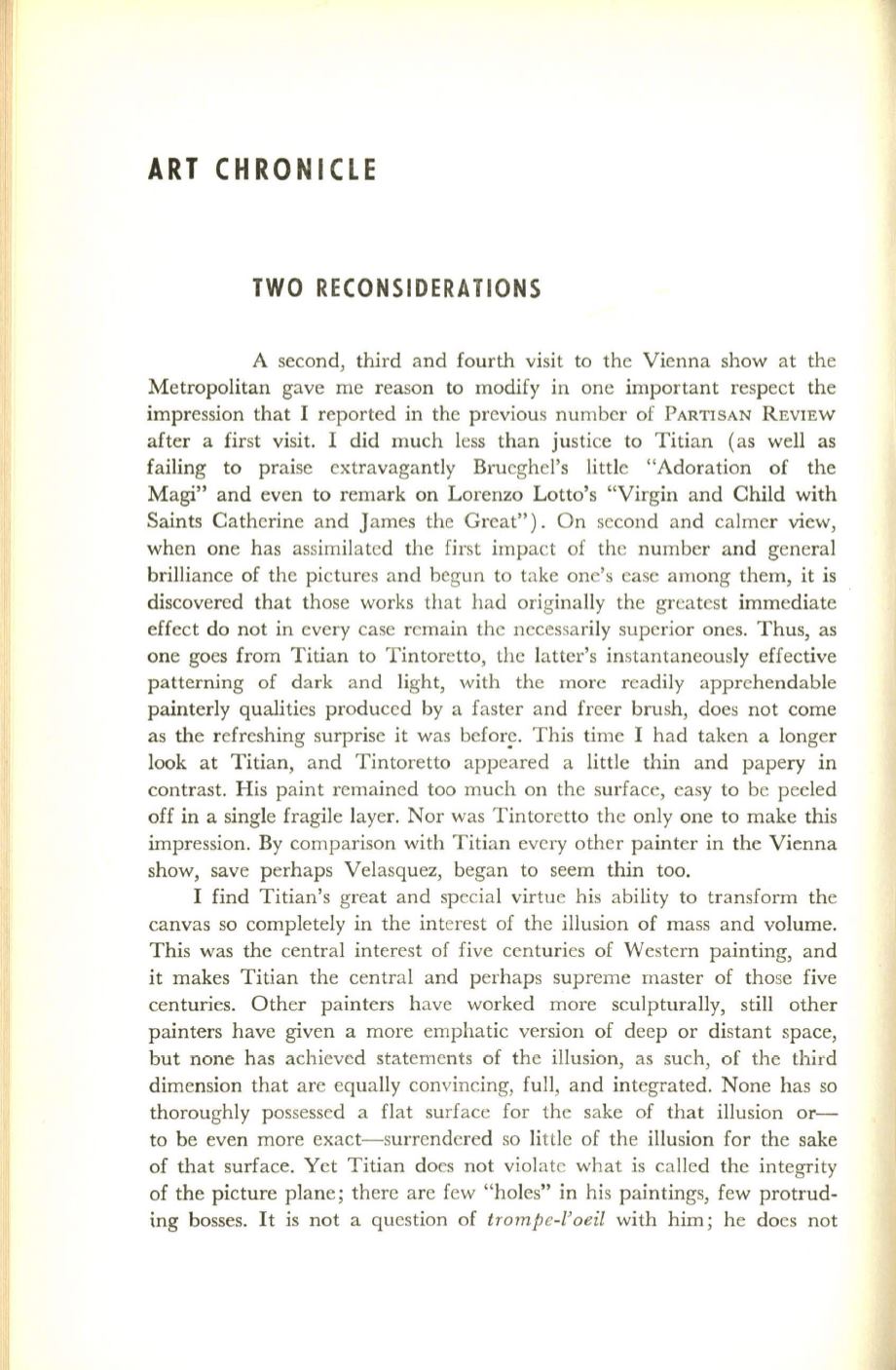
ART CHRONICLE
TWO RECONSIDERA liONS
A second, third and fourth visit to the Vienna show at the
Metropolitan gave me reason to modify in one important respect the
impression that I reported
in
the previous number of
PARTISAN
R EVIEW
after a first visit. I did much less than justice to Titian (as well as
failing to praise extravagantly BruegheI's little "Adoration of the
Magi" and even to remark on Lorenzo Lotto's "Virgin and Child with
Saints Catherine and James the Great"). On second and calmer view,
when one has assimilated the first impact of the number and general
brilliance of the pictures and begun to take one's ease among them, it is
discovered that those works that had originally the greatest immediate
effect do not in every case remain the necessarily superior ones. Thus, as
one goes from Titian to Tintoretto, the latter's instantaneously effective
patterning of dark and light, with the more readily apprehendable
painterly qualities produced by a faster and freer brush, does not come
as the refreshing surprise
it
was
befor~.
This time I had taken a longer
look at Titian, and Tintoretto appeared a little thin and papery
in
contrast. His paint remained too much on the surface, easy to be peeled
off in a single fragile layer. Nor was Tintorctto the only one to make this
impression. By comparison with Titian every other painter in the Vienna
show, save perhaps Velasquez, began to seem thin too.
I find Titian's great and special virtue his ability to transform the
canvas so completely in the interest of the illusion of mass and volume.
This was the central interest of five centuries of Western painting, and
it makes Titian the central and perhaps supreme master of those five
centuries. Other painters have worked more sculpturally, still other
painters have given a more emphatic version of deep or distant space,
but none has achieved statements of the illusion, as such, of the third
dimension that are equally convincing, full, and integrated. None has so
thoroughly possessed a flat surface for the sake of that illusion
Of–
to be even more exact-surrendered so little of the illusion for the sake
of that surface. Yet Titian does not violate what is called the integrity
of the picture plane; there are few "holes" in his paintings, few protrud–
ing bosses. It is not a question of
trompe-l'oeil
with him; he does not


